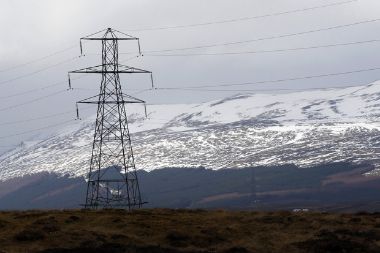
The longest delay has been 26 months on the Ancoa-Alto Jahuel line. Administrative problems and conflicts with the communities are the main obstacles. The new strip study procedure should shorten these time periods.
Causes of delays in power transmission lines
A few weeks ago, InterChile made official a new delay in the start of operations of its Cardones-Polpaico power transmission line, postponing the date to June 11 of this year.
The 753-kilometer, US$ 1 billion project has not been able to complete its work due to problems with the community of La Dormida, in Olmué.
For the delay, the Ministry of Energy charged the company guarantee bonds for more than US$ 2 million.
If this new deadline is met, the line will be 17 months behind schedule.
However, their situation is not out of the ordinary. An example of this is the El Rodeo-Chena line (220 kV), which joins a 20 km section, whose construction took 18 months longer than budgeted. The same delay was experienced by the Nogales-Polpaico line (220 kV) of 90 kilometers in length.
The Charrúa-Cautín project (220 kV), which is 200 kilometers long, took 19 months longer than planned.
Although none of them exceeds the 26 months longer than expected that the Ancoa-Alto Jahuel line (500 kV) took.
“In Chile, the main consumption centers are very far from the places where there are resources,” says Francisco Aguirre, director of the energy consulting firm Electroconsultores. This, according to Aguirre, would be the main problem.
The distances mean that the infrastructure of the lines must be located along large tracts of land, where there may be many private properties with different owners or places that have environmental protection, explains Fernando Abara, a former prosecutor for the energy company Transelec.
This means a great challenge, where complex negotiation processes have to be carried out with the owners through which the line passes. In addition, a series of permits must be obtained to approve the construction of the works, which can take years.
Abara adds that the environmental institutional framework that has been developed in recent years has complicated rather than facilitated the processes. “Many times there is legal uncertainty, because when you already have the environmental permit, legal actions continue to be filed, things continue to be reviewed and the judges have the power to paralyze the works,” he says.
Another important factor is the rejection of the communities. A discontent that has grown in recent years and is difficult to avoid, says Francisco Aguirre.
“It is something that is already installed in society. One solution is for companies to do more work with communities early on,” says Rodrigo Jiménez, general manager of Systep, an energy sector consultancy.
Fringe studies
The new Electricity Transmission Law enacted in 2016 established a new way to define the layout of lines called strip study. This consists of the Ministry of Energy taking care of this task, which is then tendered to a company.
“These studies have different instances of early participation to identify critical points. Although they do not completely eliminate risks, they do reduce them,” explained the Ministry of Energy. In this way, companies locate the most problematic sites from the outset.
Rodrigo Jiménez says that fringe studies can speed up deadlines and that they should be done in depth to give projects the certainty that they will not encounter major problems in the future.
For his part, Fernando Abara warns that “as the strips are advertised well in advance, there may be real estate speculation”.





